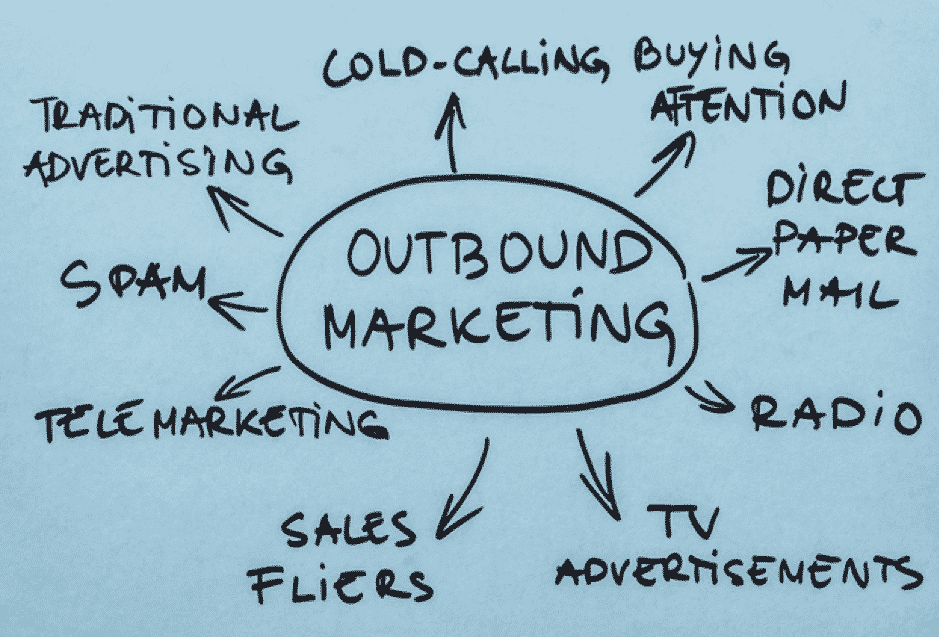In this article we would like to tell our readers how to effectively use Salesforce Marketing cloud from a perspective of modern concept of “inbound marketing”. We will introduce the concept of Inbound Marketing, justify how important it is to start using it and apply its concepts to functionality available in Salesforce Marketing Cloud, we will conclude by telling you how to build your funnel using the two.
Let’s take a closer look at the concept of “inbound marketing”. The term itself was coined and widespread in 2005 by Brian Halligan, one of the creators of the popular web resource HubSpot. He was encouraging his readers to “rethink marketing”.

Mr. Halligan contrasts the methods of “old”
or rather say “traditional”, classical marketing – outbound telephone calling of
potential customers, or as we know prospects (telemarketing, cold calls),
advertising mailings, advertising in print media, on television and by radio,
distribution of flyers, placement of advertising materials in urban space (such
marketing is called “outgoing” in Brian Halligan’s terminology) – completely
new ways of conducting advertising campaigns.
To be precise, the definition of “inbound marketing” is:
Inbound Marketing is the
process of attracting the attention of prospects, via content creation, before
they are even ready to buy; it’s one of the best and most cost-effective ways
to convert strangers into customers and promoters of your business.
So, the revolutionary new “inbound marketing” is based on the principles explained below.
Inbound Marketing Cloud process explained
- Active use of SEO / SEM marketing methods.
- Blogging – to draw attention to your landing page / website. (We do it! Hurray!)
- Social Media – widespread use of social media (Facebook, Twitter, Instagram) to promote a new product / service.
- Maintaining your own RSS feed, webinars, podcasts, publishing eBooks.
- Preferred use of various of free e-commerce tools such as Google Analytics and Content Experiments.

Mr. Halligan, inclined to aphorism, defines the concept of “inbound marketing” as “a simple three-step process”:
- Attract visitors to your web-site/landing pages/online resources
- Convert them into your customers
- Analyze your actions
Here’s how this process looks in a slightly more detailed, “five-step” scheme:
- Drive traffic to your pages via social, digital, blogs, printed or any other means
- Convert a visitor into a lead (for example by using presales nurture journey!)
- Convert lead to customer (buyer) – nurture them to become your customer.
- Transform a “one-time” buyer into a regular (how about by developing post-purchase journey?)
- Constantly analyze your actions for best results – use available data to analyze the behavior and what triggers different types of behavior.
How effective is inbound Marketing?
Inbound Marketing is simply more in line with the spirit of the time when costly advertising campaigns by market giants turn into a waste of money, according to statistics from Gallup Media:
- 86% of viewers switch their TV channel as soon as an ad starts on screen
- 44% of respondents never opened promotional emails.
It is pretty obvious that old methods do not work in modern times, if you are stuck in the old your business will fail, or will decline. It is a matter of time.
Salesforce Marketing Cloud Inbound Marketing Model
So now let’s get to the question on how to align Salesforce Marketing Cloud with Inbound Marketing? That’s sounds like a dumb question, does it? Well, no. A number of clients we have worked with never had or even got to thinking about developing a proper marketing strategy let alone inbound marketing strategy.
In our view, Salesforce Marketing Cloud offers all the tools required to run effective inbound marketing cloud campaigns and drive inbound marketing strategy.
It has all the tools needed to run end-to-end inbound marketing campaigns with an addition of super-cool features available natively in Salesforce Marketing Cloud or as part of Salesforce cloud ecosystem, see the image below:

So, we have now blended the concept of inbound marketing and the tools available in Salesforce Marketing Cloud. Let’s call it Salesforce Marketing Cloud Inbound Marketing Model – what the next? We can now start thinking creatively and build a number of journeys that would align with the above model.
However, journeys are quite business specific and require deep-dives into the business / sales / marketing processes in order to be effective at Digital Aquila, we are not only focusing on technical aspects of Salesforce Marketing Cloud, but also on building and developing your ROI Maximization Marketing Journeys that would make your business grow!
Having said that, we are happy to offer a more generalized idea of what journeys can be built based on the above model. Want to learn more?
Fill in the form below and get a journey schematic template and start… getting leads into the funnel.
If you have any questions or need help with Salesforce Marketing Cloud, reach out to us: support@digitalaquila.com or (301) 468-3535

